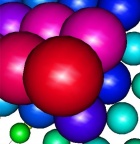Value investors know that periods of underperformance are par for the course. Even Warren Buffett’s mentor Benjamin Graham recommended buying ‘baskets’ of up to 30 deep value stocks to diversify some of the risk.
High street fashion retailer French Connection is a case in point. Before the recent news that it is being put up for sale, investors who had been expecting that outcome had to endure years of sideways and downwards price moves, only for the shares to spike up and re-rate in a matter of days. With this kind of stock, it is easy to be right - but far too early.
The retailer's shares have doubled since March and yet French Connection still only trades on 0.42 times sales. Some value investors will have found it hard to stick to their guns but, if a sale completes, they will forget all those sleepless nights and crises of confidence.
How to stop buying early
What if we could forgo all that fretting in exchange for a bit of the upside at the beginning? This is the aim of an approach called Tiny Titans, which blends value with relative strength momentum. This small/micro-cap strategy was set out by the US fund manager James O'Shaughnessy in his 1996 433-page tome, What Works on Wall Street.
The screen is simple - there are only two criteria: price-to-sales and relative strength momentum. O’Shaughnessy’s own studies find that, from 1951 to 2003, low price-to-sales (PSR) companies ‘beat the market more than any other value ratio and do so more consistently’. If an investor had put $10,000 into the 50 lowest price-to-sales ranked companies in the US All Stocks universe in December 31st of 1951 and rebalanced annually would be sitting on an astonishing $22,012,919 as of December 31st of 2003. Unfortunately, said investor is neither real nor a member of my family. O’Shaughnessy further posits that the PSR ‘is the best guide for future performance’.
Performing the same exercise for the 50 companies with the highest price appreciation in the preceding year, rebalanced annually, O’Shaugnessy finds that an investor who put in $10,000 in 1951 would have taken out $4,814,164 at the end of 2003.
The screen is actually top of the pile in terms of five-year returns, although it has given a chunk back amid the recent tricky market conditions.

In…

.jpg)





